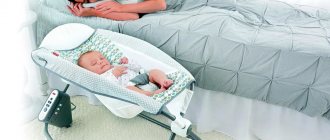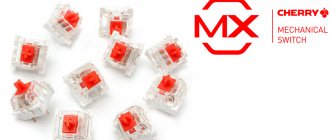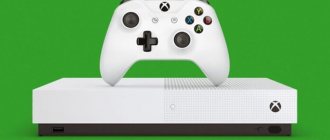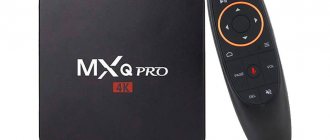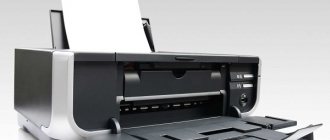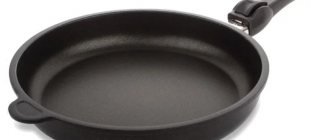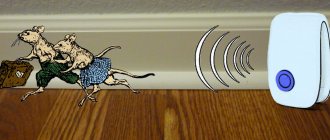Created: 12/09/2020
Updated: 02/26/2021 19:09:17Share:
Author of the article: Vladislav Samoshkin
*Review of the best according to the editors of expertology.ru. About the selection criteria. This material is subjective in nature, does not constitute advertising and does not serve as a purchase guide. Before purchasing, consultation with a specialist is required.
Are you planning to learn how to play the synthesizer? In this case, there is no point in taking any advanced model designed for professionals. The relevant stores sell a large number of synthesizers for beginners - they are cheaper and often offer a training mode. And in order not to be disappointed in the purchased item, we recommend that you choose one of the models discussed below - they all have the least number of shortcomings.
What types of synthesizers are there?
In order for the treasured melody to sound at home in your own performance, you will have to work hard on the science of music. The synthesizer was named so because it synthesizes several instruments. A modern keypad can not only execute commands, but also teach, telling you which key to press next. The first step that brings you closer to your cherished purchase is to decide what (or who) the tool is for:
- for a child exploring the musical universe;
- as a home version of a piano or grand piano;
- as a source of income, i.e. for work in the musical field;
- for professional activities. Composing, recording and arranging melodies.
Depending on the purpose, synthesizers are:
- For beginners. They are compact and have a minimal set of sounds, functions and accompaniment styles.
- Semi-professional. They have 5-8 octaves and an expanded range of capabilities.
- Professional. Complex technology with unlimited possibilities and hundreds of programs. Capable of recording, mixing, processing, digitizing.
- Digital pianos are instruments that imitate a classical piano. Hammer mechanics allows you to press the keys with the same force as on the classic counterpart.
Some synthesizers for beginners have a display and tutorials
Another modern development for professionals is the midi keyboard. It is designed to control virtual keyboard instruments on a computer. It has an unlimited number of sounds and special effects, since it receives all the capabilities of music applications.
Synthesizer Selection Options
Choosing a synthesizer is not difficult if you know its key characteristics and understand their impact on the process.
Number of keys
Their number determines how many octaves the device has and determines the range of playable parts. Some pieces are played in two or three octaves, while others require five or more.
To entertain children aged 5-7 years, you can purchase a device with 32 keys, which will allow you to create simple melodies arranged with additional sounds. Children will be delighted, and parents will be able to save money.
For serious training in classical music, you will need a synthesizer with 88 keys, the number of which is identical to the piano. This will allow a child or adult to complete assignments from music school at home. For a serious hobby or playing in a group, you need a model with 61 keys. With its help you will be able to play all genres, and it will be more compact for transportation and installation.
Auto accompaniment
This is an additional function that can adapt to the selected style of music and add its own arrangement. The performer puts chords with his left hand, and the device selects additional accompaniment in harmony with the genre being played (drum hits, sounds of wind instruments, bass from a guitar, etc.). The musician leads the main part with his right hand. This creates the feeling that a whole ensemble is performing, although there may only be one person on stage.
The presence of auto accompaniment will be useful for amateurs, which will help them master simple parts, and the equipment will complement and enrich their work. This way you will be able to impress guests and relatives without spending many months in painful rehearsals. This function is also beneficial for fans playing in small cafes and restaurants.
A large stage is not required to accommodate a speaker, and the variety of repertoire will suit everyone. Depending on the model, there may be from 30 to 200 built-in styles. For a hobby, the minimum value is enough. An amateur group needs a large range of up to 120 styles to perform in a cafe.
Professional musicians play synthesizers without auto accompaniment. They do not need to be accompanied by additional sounds to suit the taste of the instrument, and they clearly know what they want to get in the end. But for this you need to be a master of the keyboard device, because the pure playing of an amateur will feel meager.
Keyboard type
Keys on different synthesizer models can be of several types:
1. Mechanical
They produce a sound when pressed, like a button. The volume is set on the instrument, and the force of impact on the key does not affect the strength of the sound. This is a simple option for a child's frivolous game.
2. Dynamic
They are also called active, since the force of the fingers touch is proportionally reflected in the volume of the sound. This way you can play and put feeling into the music, fingering softly at subtle intros and pressing the keys firmly at climaxes. This is suitable for a serious hobby or professional activity.
3. Hammer
Has more weight and is very similar to the operation of a piano. Pressing such a key requires some effort, which is good for students of music institutions, so that devices for practicing at home and in the hall do not differ in the spring properties of the keyboard.
4. Touch
Triggered by touch without pressing. Convenient for mixing sounds at discos, cafes or home games.
Sequencer
To record a piece in real time, you need an additional module in the synthesizer. This will allow the equipment to create and remember new melodies obtained during experiments. The technique saves data not in the form of music as on a voice recorder, but in the form of a set of played notes with all the characteristics of their performance.
This will prove extremely useful for professionals to truly create with their musical instrument. The existing recording restrictions are also important here. A good indicator would be 5 songs, which will not require frequent work with files for saving on a third-party device. It is not worth purchasing such a synthesizer for home use.
Sampling
Synthesizers with this feature are more expensive. Such devices are capable of modeling and mixing short sections of sound (voice, birdsong, orchestra). Recording is done via audio output and microphone. The resulting fragments are distributed on the keyboard so that pressing plays one particle from the resulting sound. This can create an interesting background or a unique solo. This is suitable for entertaining at home or playing at a wedding in a cafe, where you can amuse guests or create an original track.
Backlight
The presence of backlight allows you to quickly learn a piece without looking at the notes, and without even knowing them. To do this, a composition is launched from the device’s memory, and the keys begin to flash red in the sequence and speed with which they need to be pressed to lead the part.
This is great for kids or great for families. Learning comes down to the reaction to pressing, and a little practice leads to confident play and the surprise of relatives. Of course, professionals do not need such a function. It will also turn out to be superfluous for learning to play the piano from notes, where you need to remember the meaning of the keys, and not hit the first one that lights up.
Built-in Voices
This parameter hides the capabilities of the equipment in terms of sound diversity. The selection range varies from 10 to 700 or more. Timbre implies individual sounds of instruments (guitar, pipe, violins, drums), and each type is capable of creating many of its own sounds. For example, on a guitar you can play both a serenade on the high frets and a bass line. And such diversity opportunities apply to all instruments.
Therefore, the greater the number of timbres, the more sounds the synthesizer can “parody”, and the richer its playing will be. For home recreation and hobbies, models with an indicator of 200-300 are sufficient. For professional activities, in order to model and experiment without restrictions, choose a technique with 500-700 timbres.
In addition to quantity, the indicator of simultaneous sound is important. The device will not be able to reproduce all 400 sounds at once, so the complexity of the composition depends on the polyphony. The simplest models produce 20 individual tones at a time. This is enough for children's activities and hobbies. The performance in the cafe is organized at the proper level with a polyphony of 32-70. In the case of professional activities, synthesizers with a polyphony of 100 and higher are used.
Playback method
A synthesizer is an electrical device where the sound is obtained not from the mechanical impact of a key on a stretched string, but due to the closure of a contact and signal processing by various devices. Analog synthesizers use sound wave generators, and the shape and length are changed by influencing the characteristics of the electrical signal passed through the chips.
This is a physical process, the operation of which is suitable for a group performing on stage with a large number of musical instruments. This way the synthesizer part will not get lost in the general background.
In all other cases, it is worth using a digital method of sound reproduction, where the central processor is responsible for this, as in a computer. This gives compact body sizes, less heating during long-term operation and a large range of sounds, which is suitable for amateur playing, performance in a cafe or at a small event.
Effects
The synthesizer is capable of not only repeating all kinds of tones or creating new ones, but also modifying existing familiar sounds. To do this, use effects: reverb, chorus and others. They allow you to stretch out a wave or play a chord with multiple copies, imitating a choral sound. The number of effects can be from 3 to 50.
In the case of amateur activities, you can buy a model with an indicator of 3-5. To perform in a restaurant, a young band will need an instrument with 15 effects. Professionals prefer to work with maximum performance.
Keyboard Features
Before choosing the right model, it is worth considering the capabilities of a particular tool. The most obvious difference is the keyboard. It can be passive or active (dynamic). An instrument with passive keys is simpler and cheaper, but their sound is always the same, because does not depend on the pressing force. The active keyboard allows you to adjust the saturation and volume by pressing the keys.
Attention! A passive keyboard is perfect for beginners, that is, 1st and 2nd grade music school. Instruments with a dynamic keyboard are necessary for a complete course of lessons in the synthesizer or piano class.
Another concept related to the keyboard is weighting. The weakly weighted one easily responds to pressing, but it is far from the piano sound. Semi-weighted is already richer, but still cannot reproduce all the magic of sounds. Weighted is the most serious and expensive option. The feel of the keys is similar to that of a grand piano.
Comparison table of the best synthesizers
| Name | Main characteristics | Price |
| Sonata SA-5401 | 54 reduced keys, the keyboard is light, unweighted, there is a screen, a training mode, auto accompaniment, 100 built-in tones. | ₽ 1 347 |
| CASIO SA-77 | Unweighted keyboard with 44 reduced keys, 100 built-in tones, 10 training melodies, two built-in speakers, headphone output. | ₽ 6 000 |
| Tesler KB-5410 | Standard 100 built-in tones, polyphony for 8 voices, training mode with two training melodies, small display, microphone input and line output. | ₽ 3 290 |
| CASIO CTK-1500 | The keyboard has 61 full-size, albeit unweighted keys, 32-voice polyphony, 120 built-in tones, 70 auto-accompaniment styles and two 2-watt speakers. | ₽ 7 990 |
| CASIO CTK-2500 | The keyboard has 61 keys, but there are 400 built-in tones, 48-voice polyphony, 100 auto-accompaniment styles, transpose, reverb and metronome functions, as well as 60 educational melodies. | ₽ 11 000 |
| YAMAHA YPT-260 | 400 built-in tones, 32-voice polyphony, 130 auto accompaniment styles, transpose, metronome, reverb, 112 melodies for training, recording ability. | ₽ 11 490 |
| YAMAHA PSR-S670 | 61 semi-weighted full-size keys, the ability to connect pedals, 30 watts of built-in audio, 930 tones and 409 effects, 230 auto accompaniment styles. | ₽ 40 200 |
| CASIO LK-266 | Keyboard with 61 backlit touch-sensitive keys, 400 tones, 48-voice polyphony, 100 auto-accompaniment styles, transpose, metronome, reverb. | ₽ 18 590 |
| M-Audio Axiom AIR Mini 32 | Connects to your computer via USB, 32 reduced keys, the keyboard is unweighted but touch sensitive. | ₽ 6 930 |
| Akai MPK Mini MKII | For 25 small-sized keys - only 318 mm in length and weighing 750 grams, there is a USB port for connecting to a PC. | ₽ 11 790 |
Accompaniment Styles, Voice and Memory
Styles are the rhythm and sound of instruments in various styles (rock, country, disco, Latin). They are expressed by a specific number, for example, 235. The value of the indicator determines the number of mixing options.
A Casio synthesizer worth 5-8 thousand rubles is suitable for teaching children
Voices refer to the sounds of different instruments. Timbre of violin, guitar, etc. allow you to significantly diversify any melodies.
A large amount of built-in memory is necessary only for those who plan to record their work. You may have external storage devices such as a flash drive or SD cartridge.
How to choose the right synthesizer?
To choose the right synthesizer model, you need to decide what you will use it for. Conventionally, all tools can be divided into 4 categories:
- children's synthesizers;
- self-paced learning tools;
- semi-professional models;
- workstations.
The first category includes very compact and lightweight synthesizers designed for the first acquaintance with the world of music. The keys in children's models are usually of a reduced size, which is perfect for a child's hand, and their number can vary from 32 to 49. Of course, you can’t really play such an instrument with two hands, but it’s great for teaching a child the keys, developing his ear and sense of rhythm, and also preparing him to play a real instrument.
Synthesizers for learning most often consist of 61 keys (5 octaves), and the keyboard can be either passive or dynamic. A distinctive feature of such instruments is the presence of a built-in learning system that allows you to learn songs built into the memory step by step. The training system depends on the synthesizer manufacturer, but always provides the opportunity to study musical notation, train a sense of rhythm and musical memory. In addition to the built-in compositions, such synthesizers allow you to learn basic chords and subsequently use them together with the auto-accompaniment function. It is worth noting that auto accompaniment not only introduces various styles of music from around the world, but also provides an opportunity to develop improvisation skills and master the basics of creating arrangements.
Semi-professional synthesizers include models with 61 and 76 keys, equipped with a built-in sequencer. As a rule, they no longer have a training system, but they do have a very flexible set of functions that allow them to arrange and create music. The sound quality of such synthesizers is significantly higher than in educational models, but it is also difficult to call them professional. These instruments are great for amateur use, home studios, and even for performances.
Music workstations are professional tools designed for music creation and concert performance. The number of keys in them can vary from 61 to 88, and the sound quality and capabilities can amaze the imagination. Some models are equipped with a keyboard with imitation hammer mechanics, but even they do not compare in feel to the keys of an acoustic piano - this is simply done for greater convenience for pianists. Workstations allow you incredible flexibility to change the smallest parameters of each sound and create high-quality arrangements without connecting to a computer. In essence, this is a powerful computer capable of meeting the needs of professional musicians, composers and arrangers.
Synthesizer for teaching a child
Until you know how seriously your child is interested in immersing himself in the musical world, you should choose inexpensive models up to 7-8 thousand rubles. They are quite suitable for mastering the basics of musical literacy and are able to develop a sense of rhythm and a sense of musical harmony.
Advice. Professionals recommend that children aged 5 years and older purchase a panel with keys of standard rather than reduced sizes. This will help you immediately get used to the correct hand position, and you won’t need to relearn it later.
If you are planning an original, educational gift for a birthday, then models from Casio are suitable for children from 2 to 5 years old. They are properly tuned and promote hearing development, and feature smaller keys. These types of synthesizers do not have a tutorial function, so parents should be prepared to show their kids a few simple tunes.
Children's models
CASIO SA-47
Allows the child to take his first steps in the musical world more easily. The design has 32 small keys, which are well suited for children's fingers, but in terms of sound quality, this synthesizer is quite good. Its sound range includes 100 timbres, 50 different musical styles, and 8-note polyphony. In addition, the instrument has 5 buttons responsible for drums, a reed organ mode and a piano mode with a switching function. Due to its compact dimensions, this synthesizer is ideal for young musicians.
The weight of the device is small, the keys have a soft stroke, which allows the baby to play on it for a long time, and the fingers will not feel tired. The main thing is to place the synthesizer on a flat surface before turning it on; it will not slide on it due to the presence of rubberized feet. The design is made in retro style. The case is made of high-quality silver plastic with a matte finish, on which dust, fingerprints and other types of contamination will not be visible. There are also reliable and fairly powerful speakers that provide good quality sounds. It is worth noting that the synthesizer is equipped with a liquid crystal display on which you can read all the information necessary for the user. The device has a training mode: it includes 10 melodies that the baby is asked to repeat. If necessary, you can connect headphones.
Advantages:
- Excellent sound quality;
- Small overall dimensions;
- An informative liquid crystal display is provided;
- High-quality assembly;
- The weight is quite suitable for a small child;
- Powered by batteries or accumulators, can be powered from the mains.
Flaws:
- Some users feel that the speakers sound quiet.
CASIO SA-47
4. Shantou Gepai HS5416A
For a children's model, this design has a fairly large range of capabilities: 12 educational-type demo tunes are stored in the memory of this synthesizer. There are over two hundred key settings, exactly the same number of rhythm settings, and 7 types of drums at once. It is possible to change the volume and tempo. The child, if desired, can record a melody he has invented into the equipment’s memory, and then play it back. Like all other children's synthesizers, it has a very convenient learning function and a number of sound effects. The device comes with a microphone. The synthesizer can be powered by six AA batteries or by a power cord (the latter is supplied with it).
Of course, such a toy cannot be compared with a professional musical instrument, but it has a wide set of keys - 54 pieces, just like a classic piano. They are located quite compactly, so the child does not have to strain his hands too much to reach the desired key or play the required chord. There is no liquid crystal display here, but all the functions are already clear - the buttons are labeled. The device has a built-in acoustic system consisting of two speakers that produce stereo sound. If necessary, you can connect headphones to the synthesizer. As users note in their reviews, this model is well suited for both children and adults who are just beginning to be interested in music and playing various instruments.
MORE: Latest Tronsmart Products to Look Out for During the Black Friday Sale
Advantages:
- Many different operating modes;
- 54 keys;
- Possibility to work both from the mains and from batteries;
- Reliability and durability.
Flaws:
- May slip on the surface.
Shantou Gepai HS5416A
CASIO SA-78
This is a fairly high-quality synthesizer, despite the fact that it was originally created specifically for children. First of all, the manufacturers took good care of children's safety. The speakers are protected in such a way that a child cannot reach them in any way. The body is made of high quality matte plastic. The buttons are all made of soft rubber with a sensitive touch. The keys are made of glossy plastic, a little easily soiled, but this is not critical. There are 44 of them here.
The synthesizer runs either on batteries or on a special 9.5 V 1 A adapter, which is connected to a special connector located next to the headphone jack. If necessary, you can connect external speakers, which can significantly improve the sound quality of the device. The weight of the device is small - together with six batteries it barely reaches one and a half kilograms. The case has very convenient recesses for carrying it. Even a three-year-old child can easily carry it from place to place without straining himself. At the same time, the device has five additional buttons responsible for the percussion instrument mode, and there are tempo and volume controls. The central part of the device has a monochronous liquid crystal display. It displays a metronome indicating rhythm, staff and other useful information. In addition, there is a large yellow button that switches between piano and organ modes. If the synthesizer is turned on without use for five minutes, it will automatically turn off.
Advantages:
- Small overall dimensions and weight of the device;
- Quite acceptable sound quality;
- Works both from the network and from batteries;
- Can be used by adults too.
Flaws:
- Not detected.
CASIO SA-78
Synthesizer Yamaha PSS-E30
The model is characterized by excellent sound, the keyboard is compact and designed specifically for small children's fingers. In addition, the synthesizer has an expanded library of compositions, with the help of which it will be possible to form and direct the creative impulses of the child. The design is miniature and lightweight - even a five-year-old child can easily handle it. The instrument's tones are of high quality, and a wide range of various additional effects are provided - from animal voices to a locomotive whistle. A training mode is provided, through which the child will acquire the basics of musical literacy, and in a playful way. There are several difficulty levels for this mode. A large number of well-known and popular songs are preinstalled in the synthesizer’s memory, which the child is invited to learn.
The synthesizer has a built-in speaker system and a headphone jack with a standard 3.5 mm jack. The device can operate either from four AA batteries, or from a power bank, or via a USB slot it is connected to the mains via a power supply. There is an original Quiz mode that allows you to guess sound effects and sounded notes - this activity will be interesting not only for children, but also for adults. With its help, you can quickly and well develop your ear for music.
Advantages:
- Quite wide functionality of the tool;
- Well thought out ergonomics of the synthesizer;
- Made from quality materials;
- Can be used both in stand-alone format and connected to the mains;
- Low weight and overall dimensions;
- There are a large number of different modes.
Flaws:
- At first it will be difficult for a child to understand all the capabilities of this device.
Synthesizer Yamaha PSS-E30
Synthesizer Yamaha PSS-F30
The keyboard includes 37 keys, and the device operates on the basis of 32-note polyphony. In addition, the synthesizer has 120 tones of the highest quality and 114 styles that will surely interest the child. The model also has an intelligent automatic accompaniment system, thanks to which you can arrange a real home concert. The headphone jack allows you to enjoy silence while your child practices this instrument. The keyboard is small in size, so it is well suited for a child's small fingers. There is a wide library of compositions with the help of which small children can quickly and fully realize their creative impulses. The tool itself is small-sized and light in weight. There is also a Smart Chord function, which will allow you to play the instrument without even knowing the musical notation. The child will be able to compose his own compositions and play songs from the synthesizer’s memory.
The model has the ability to virtually play 117 instruments plus three more drum kits. It has a liquid crystal display, which displays all the information useful to the user. There is also a built-in metronome. The speaker system has a power of 1.4 W - quite enough for a child. There is no power supply included, you will need to purchase it separately; the synthesizer can also run on batteries. The weight without them is only 1.2 kg with overall dimensions of 506x54x201 mm.
Advantages:
- It has minimal dimensions - the synthesizer is suitable for a child aged 4 years and older;
- Smooth travel of all keys;
- The synthesizer can simulate a wide variety of instruments;
- You can play it without even having minimal knowledge of musical notation;
- An informative display is provided.
Flaws:
- The kit does not include a power supply - you will either have to change the batteries all the time or buy it separately;
- Low volume of the built-in speaker.
Yamaha PSS-F30 overview: Everything your child needs to start playing.
Synthesizer Yamaha PSS-F30
Synthesizers for Teens and New Adults
Naturally, no advanced technology can replace a teacher teaching musical art. But there are times when an adult who decides to explore musical fields cannot hire a tutor or attend a music school.
Attention! Beginners will benefit from an additional feature – automatic accompaniment. When using it, the synthesizer will play the missing sounds.
The good news is that everyone can learn to play on their own! You just need to purchase a “self-playing game” with a training function. Hints are expressed in the backlighting of the keys and in symbols on the monitor.
Synthesizers from Casio, Yamaha, Roland, Korg are suitable for beginners
When learning one of the hundreds of built-in melodies, all you have to do is press the keys one by one, under which the light will light up. The program includes step-by-step training with increasing complexity. Later, the backlight function can be turned off, and you can learn musical compositions on your own.
Many synthesizers for beginners have the ability to connect to a computer. This significantly expands the horizons of possibilities. For example, you can download a training program for your favorite song.
The best children's synthesizers
The main criterion when choosing a synthesizer for a child is the age of the beginning musician. If he is not yet at least five years old, then it is better to purchase the simplest gaming models.
Those devices that are intended for more serious learning, even for children, have a wide range of functionality.
The rating of children's synthesizers contains instruments in which the sound quality (and appearance) is almost no different from adult gadgets. But the sizes are more suitable for a schoolchild: the keys are reduced enough to be comfortable for small fingers.
When a young musician has already mastered the basics of music, you can take a closer look at mid-level synthesizers. In addition to sound quality, these options have a more powerful amplifier and, for example, a built-in LCD screen with the ability to connect to a computer.
5Tesler KB-6130
Cost 7 Functionality 8 Sound 8 Assembly 9
The overall score is calculated as the average value of the sum of the main parameters.
8.0Rating
pros
- Affordable price
- Battery-powered operation
- Training programs
- Availability of display
Minuses
- No pedals
The inexpensive instrument (only 3,000 rubles) is equipped with a keyboard of 61 keys. Of these, 8 keys are designed to create different effects. The device allows you to quickly master the basics of playing a synthesizer: there are three built-in educational programs for children, as well as more than ten demo songs. Each played melody can be recorded and played back.
Judging by the reviews, the advantage of the model lies in its compactness and mobility: it takes up little space, but can work not only from the mains, but also from batteries.
4DENN DEK61mini
Cost 8 Functionality 8 Sound 8 Assembly 10
The overall score is calculated as the average value of the sum of the main parameters.
8.5 Evaluation
pros
- Audio jack and headphone output
- Built-in training programs
Minuses
- Powered by electricity only
Which synthesizer is best to buy for teaching a child? Of course, one that is perfectly balanced in functionality. The instrument boasts 5 octaves and 16 built-in tones. There is also an auto accompaniment of 10 built-in styles. For classes, a keyboard of 61 keys is provided, and all of them are adapted in size for a child.
To make learning more comfortable, the manufacturer equipped the device with built-in programs, the ability to record one track and 6 existing songs in the synthesizer’s memory.
Unfortunately, power is supplied only from the mains. However, its compact dimensions allow you to install the device next to an outlet.
3CASIO SA-46
Cost 7 Functionality 8 Sound 8 Assembly 9
The overall score is calculated as the average value of the sum of the main parameters.
8.0Rating
pros
- Battery operation
- Switch to organ
- Built-in acoustics and 2 speakers
Minuses
- High cost compared to other participants in the rating
The SA-6 model is the entry-level model in the line of synthesizers, therefore it combines a minimal set of functions and a fairly low cost. For 4 thousand rubles, the buyer receives a compact tool weighing only 1 kg. It can be used as a direct synthesizer or switched to an organ with the press of one button. By the way, there are only 32 keys, so even the most novice musician will not get confused.
This model offers eight-note polyphony and 100 tones. Built-in programs are provided to help you learn the basics.
The tool can operate autonomously using 6 AA batteries. This work takes just over 5 hours.
2CASIO SA-78
Cost 8 Functionality 10 Sound 10 Assembly 8
The overall score is calculated as the average value of the sum of the main parameters.
9.0Rating
pros
- Simple and intuitive controls
- Audio output for headphones
- Training program
Minuses
- High price
The second CASIO synthesizer from the SA line is distinguished by a large number of keys (there are 46 of them) and a rich sound. There are 100 tones, and for the convenience of a beginner, they are numbered and written on the front panel. Switching between tones is accomplished by pressing a pair of keys. There are also 50 accompaniment styles.
There are 10 built-in songs for children that are easy to learn. One of the control buttons allows you to listen to the desired sections of the track. The synthesizer allows you to quickly master notes - the staff is displayed on a small LCD display.
1Medeli MC37A
Cost 10 Functionality 9 Sound 9 Assembly 9
The overall score is calculated as the average value of the sum of the main parameters.
9.3 Evaluation
pros
- Polyphony, timbres and styles
- Availability of USB output
- Three built-in lessons
Minuses
- The display is easily scratched
An excellent option for a budget synthesizer for teaching a child is the Medeli MC37A, which costs about 3,000 rubles. However, for this money the user receives both high sound quality and excellent functionality. There is a polyphony of 32 sounds, 132 timbres and 100 accompaniment styles, which are conveniently numbered right on the body.
If you haven’t gotten around to playing complex songs yet, you can use the three-level training system and study 80 built-in songs. There is a display for mastering notes.
In addition to the standard audio output, this model has a USB connector for synchronizing with a laptop.
Things to check before purchasing. Owner experience and reviews
Experts recommend first deciding on the functionality of the purchase and choosing suitable models on the Internet. Then go to the store and listen. When talking about their purchase in reviews, buyers often say that the decisive factor for them was not the number of functions, but the sound of the instrument. By pressing a few keys on a particular synthesizer, you will find “your” sound.
In addition, owners of synthesizers recommend listening to accompaniment styles. There may be more than 200, but quantity does not mean quality.
Advice. If you want to purchase a reliable instrument, then pay attention to well-known manufacturers: Casio, Yamaha, Roland, Korg.
A useful addition to your purchase may be a power supply sold separately, a stand or pedals. If you are going to take the synthesizer out of the house, a case will come in handy.
You can discover and develop musical abilities at any age. The synthesizer provides maximum learning opportunities.
The best professional synthesizers
YAMAHA PSR-S670
Professional-grade tools are the most important part of any manufacturer’s range, so Yamaha pays special attention to them - and this model, priced at about 40,000 rubles, is no exception. It has everything a musician of any level needs: 61 semi-weighted full-size keys, the ability to connect pedals, 30 watts of built-in sound, 930 (!) tones and 409 effects, 230 auto accompaniment styles. Polyphony of 128 voices will handle even the most complex compositions. It is possible to record songs, up to 16 tracks each, in .wav format. There is a headphone output, two line outputs and USB ports. An excellent, fully functional device that is worth the money.
Price: ₽ 40,200
CASIO LK-266
The device is simpler than the previous one, but also not without its raisins. The main feature of this model is the backlit keyboard with 61 touch-sensitive keys. It looks cool and is useful for learning and learning new melodies. The rest is a standard gentleman's set: 400 tones, polyphony for 48 voices, 100 auto-accompaniment styles, transpose, metronome, reverb. Pedal input, mic input and headphone output. With a price of around 18,500 rubles, this is an excellent synthesizer.
Price: RUB 18,590

